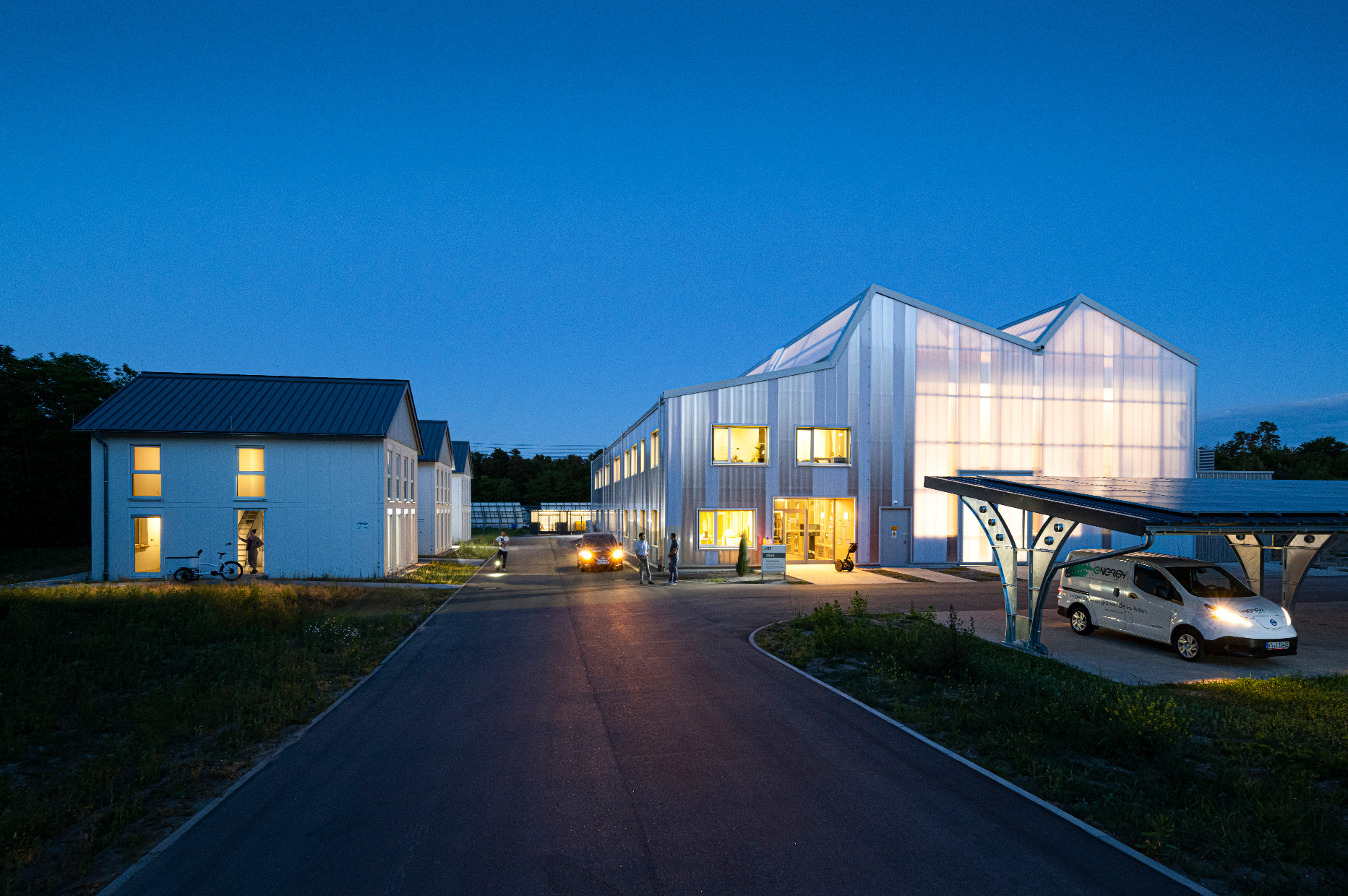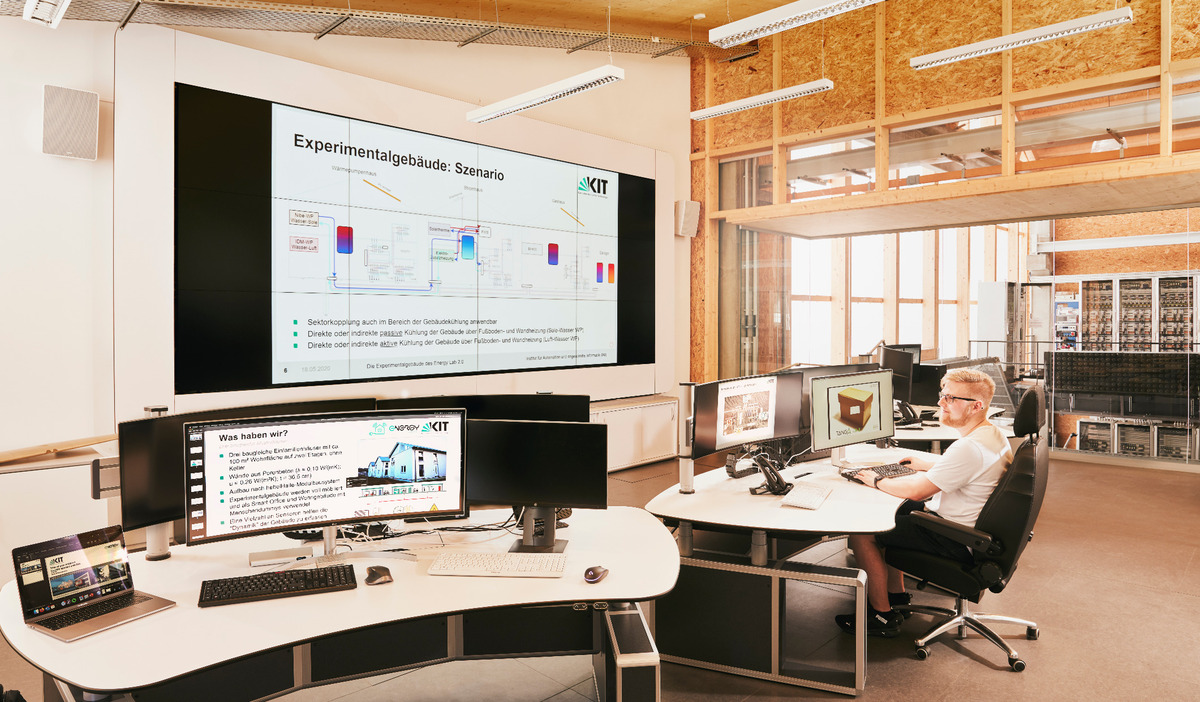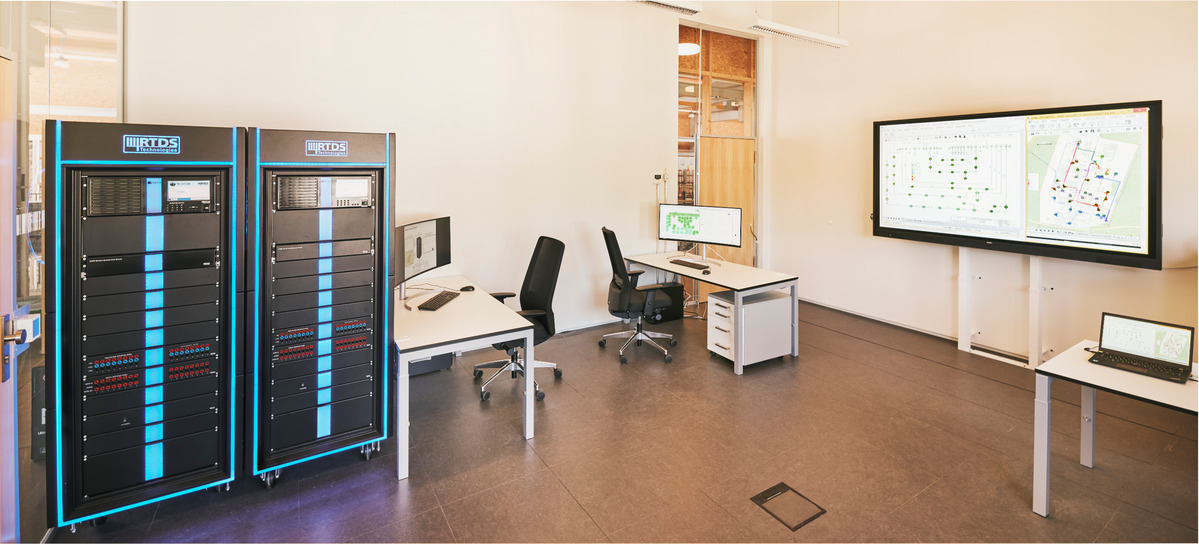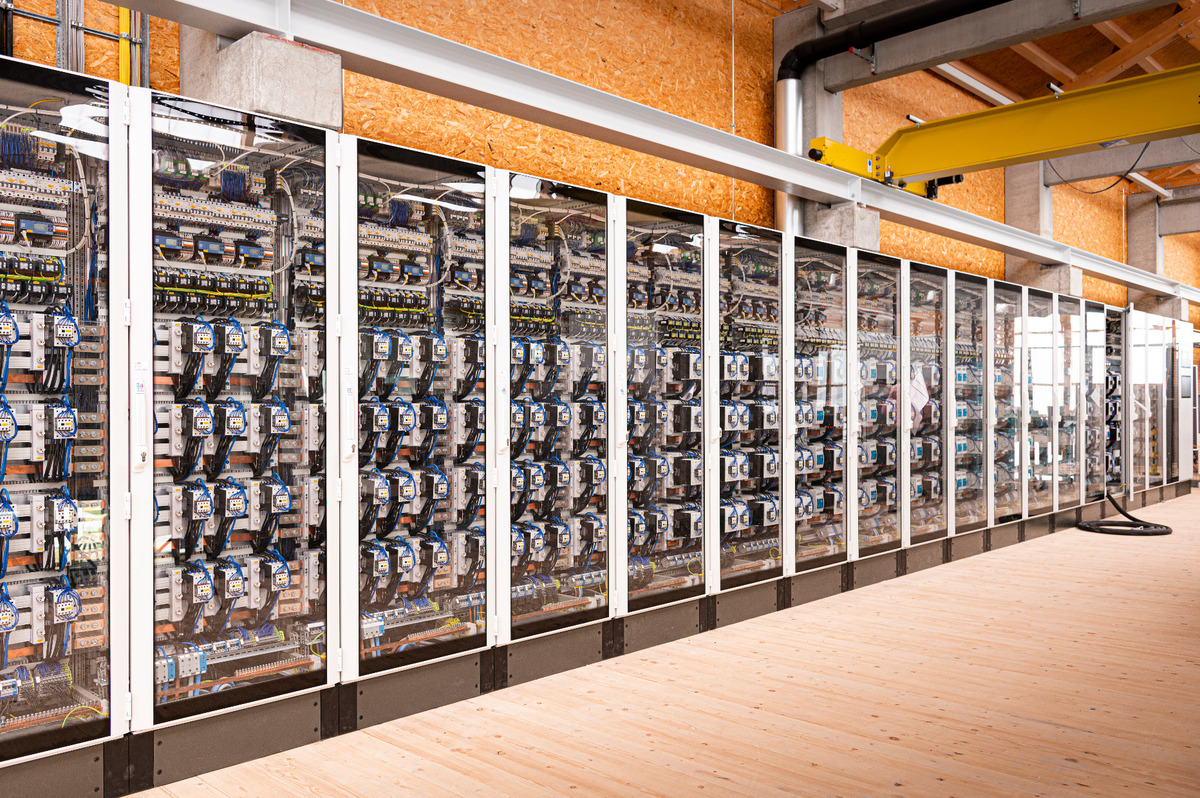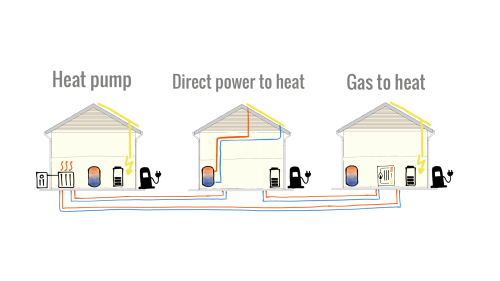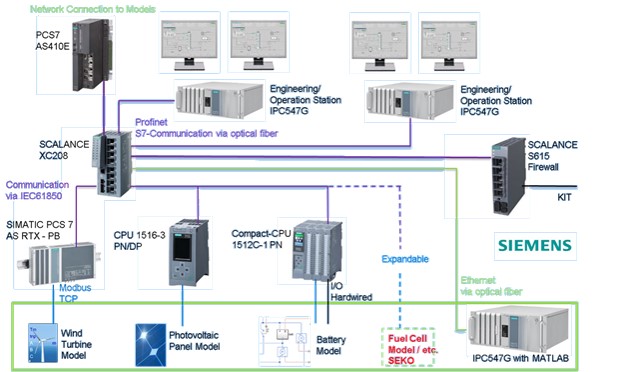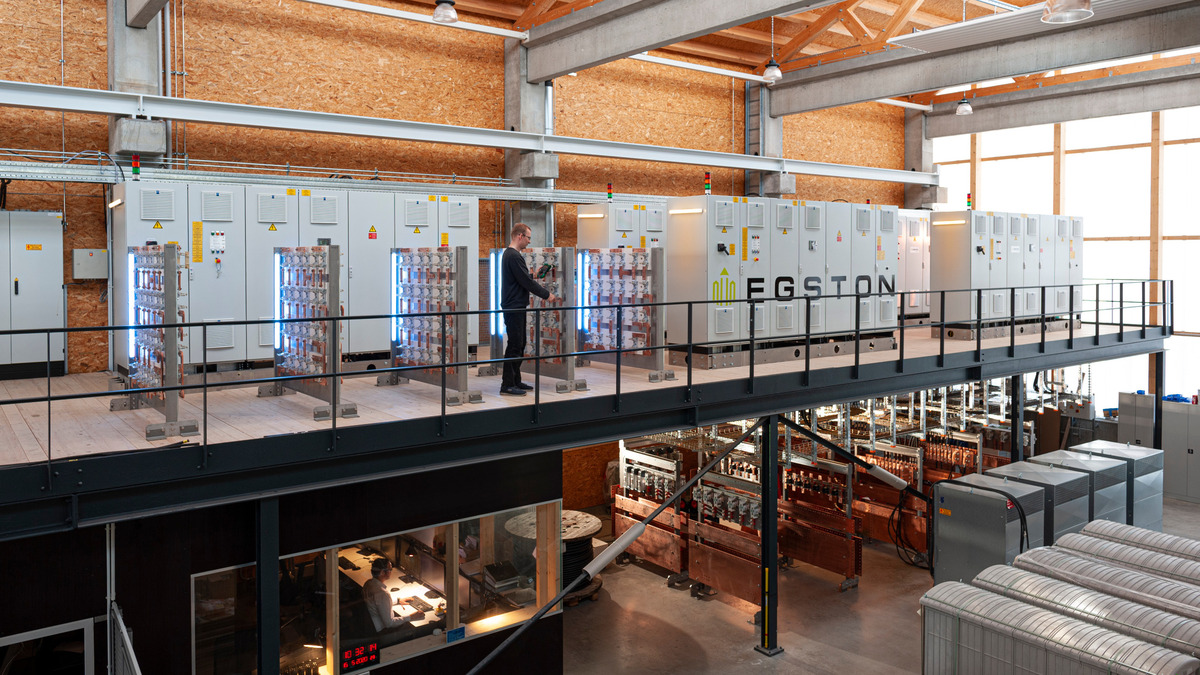Welcome to the Research Platform Energy
The Research Platform Energy (RPE) is part of the Institute for Automation and Applied Informatics (IAI) of the Karlsruhe Institute of Technology (KIT). The Research Platform Energy conducts research and development in the field of innovative, application-oriented information, automation and systems technology for sustainable energy systems. The Research Platform Energy is responsible for the scientific operation and for the continuous development of the energy research infrastructures Energy Lab 2.0 (subproject Smart Energy System Simulation and Control Center, SEnSSiCC) and Living Lab Energy Campus.
Energy Lab
The Energy Lab is a large-scale research infrastructure in which the interaction of the components of future energy systems is studied and new approaches to stabilizing energy networks are tested under realistic conditions. A network of plants links electrical, thermal and chemical energy flows as well as new information and communication technologies. The aim of the research work is to improve the transport, distribution, storage and use of electricity and thus create the basis for energy system transformation.
SEnSSiCC in the Energy Lab
SEnSSiCC bundles the IT technical work and research aspects of Energy Lab. SEnSSiCC combines the following laboratories:
- Control, Monitoring and Visualization Center (CMVC, operated by RPE)
- Energy Grids Simulation and Analysis Laboratory (EGSAL, operated by RPE)
- Smart Energy System Control Laboratory (SESCL, operated by RPE)
- Living Lab Energy Campus experimental buildings (LLEC, operated by RPE)
- Security Lab Energy (SecLabE)
- Power Hardware in the Loop Laboratory (PHIL, operated by the Institute of Technical Physics)
Control, Monitoring and Visualization Center
The Control, Monitoring and Visualization Center (CMVC) is a research-oriented infrastructure for designing, developing and testing new software for the planning and operation of smart energy systems. Based on a computer cluster with cloud and big data technologies, innovative services provide highly scalable data management, analysis, forecasting, simulation, optimization and visualization functionalities that can be used directly via the web. A SCADA instrumentation ensures the data and control connection of local and remote Energy Lab plants and networks.
Energy Grids Simulation and Analysis Laboratory
The Energy Grids Simulation and Analysis Laboratory (EGSAL) is a hardware and software infrastructure for the modeling, simulation and analysis of energy networks (electricity, gas, heat, fuels) that link producers, storage facilities and consumers. The future power grid will play a central role in the integration of all energy forms and networks in the energy transition. In EGSAL, both microgrids and the KIT Campus North power grid as well as interconnected networks (Karlsruhe city grid, transmission and distribution networks in Germany, transmission network in Europe) are being investigated. State-of-the-art software and self-developed computer solutions form the basis for this.
Smart Energy System Control Laboratory
The Smart Energy System Control Laboratory (SESCL) is an experimental facility for developing and testing modern energy technology systems and new control algorithms. The physical presence of the systems in SESCL creates a constant reference to reality and thus facilitates the implementation of the research results in real network environments. Since the experimental field is galvanically isolated from the public power grid, control strategies in borderline areas can be approved and investigated there. In addition, operating points that approach the stability limits can be controlled. Such experiments would not be permitted in the public grid.
Living Lab Energy Campus experimental buildings
In the Helmholtz Research Infrastructure Living Lab Energy Campus the construction of three experimental buildings with identical building envelope and generous instrumentation, but different controllable heating systems, was realized. The three experimental buildings enable research on a self-adjusting process control for network-based control of building heating systems and their validation in a real-world experiment. Due to an improved process control, all heating systems equipped with such modern controllers directly save energy. Electricity-based heating systems with network-based controls also provide system services in the electricity network.
Security Lab Energy (SecLabE)
In the Security Lab Energy (SecLabE) an exemplary distributed and networked energy system with typical components will be set up. The same control, IT and network components are used as in a real power network. The components planned are, for example, a small wind turbine, a battery, a photovoltaic system, a smart meter, etc. All communication infrastructure components including networking are also planned. The aim is to implement attacks on the ICT system and the automation components. In particular, the protocols are also the target of the analyses. Extensive data will be generated for the analyses.
Power Hardware in the Loop Laboratory
The Power Hardware in the Loop (PHIL) Laboratory is an infrastructure for the secure and repeatable testing of new network components, topologies and technologies in every conceivable operating situation. The PHIL laboratory is an essential element of the SEnSSiCC, which is built and operated by the Institute of Technical Physics. There, the network environment itself can be simulated in real time, which considerably shortens the development time of novel hardware components.
